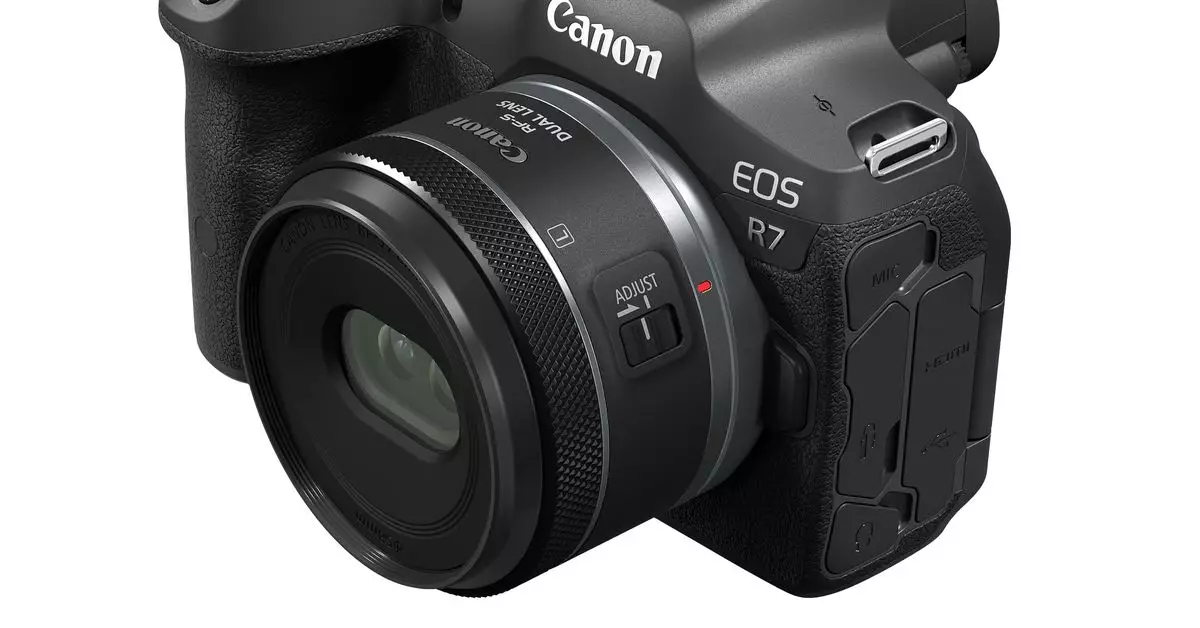Canon continues to make significant strides in the realm of entertainment technology with the introduction of its novel RF-S7.8mm F4 STM Dual lens. This groundbreaking lens was revealed during the Apple WWDC 2024 event, where tech enthusiasts caught a glimpse of its potential. Designed specifically for creators venturing into the world of 3D virtual reality content, this lens is set to provide an accessible and cost-effective solution for those wanting to produce immersive experiences for platforms like Meta Quest 3 and Apple Vision Pro.
With an estimated retail price of $449.99, the RF-S7.8mm F4 STM Dual lens is strategically priced to entice budding content creators who might have been deterred by the high costs associated with advanced 3D equipment. Canon has always been known for producing high-quality optics, but previous 3D lenses like the RF5.2mm F2.8 L Dual, which retails at a hefty $1,999, posed significant financial barriers to many. The affordability of the new lens opens up opportunities for a wider range of creators to explore stereoscopic photography and videography without breaking the bank.
While the EOS R7 camera’s starting price is $1,299, pairing it with the RF-S7.8mm lens results in a total investment of just over $1,700. This is still a significant saving compared to Canon’s more advanced 3D options that can cost upwards of $2,498. As the demand for VR and spatial content rises, this combination could become a popular choice among aspiring filmmakers and content creators.
The technical aspects of the RF-S7.8mm are commendable given its price point. It boasts a versatile aperture range from f/4.0 to f/16, with the added benefit of autofocus. Additionally, the lens includes buttons and a control wheel that allow for precise manual focus adjustments, catering to the specific needs of creators seeking that perfect 3D effect.
However, it’s essential to acknowledge the limitations of this lens compared to its more expensive counterparts. With a field of view of only 63 degrees, the RF-S7.8mm cannot replicate the expansive 180-degree capture capability of Canon’s higher-end models. Thus, it is particularly suited for close-up subjects, ideally between 6 to 20 inches from the lens. While this specificity could yield stunning detail, its reduced range may frustrate users trying to capture wider scenes.
One of the most important considerations to keep in mind is the post-capture processing necessary for images and videos taken with this lens. Unlike traditional photography, generating content for VR and AR headsets requires specialized software to process stereoscopic content. Canon provides two tools for this: the EOS VR plugin for Adobe Premiere Pro and the Canon EOS VR Utility software, both of which require a paid subscription. This addition of extra costs could deter some users, particularly those just starting in content creation.
Canon’s RF-S7.8mm F4 STM Dual lens represents a significant advancement in the landscape of accessible 3D content creation. By combining affordability with innovative technologies, Canon opens up avenues for creators who have previously been held back by the high costs associated with 3D equipment. Though it comes with certain limitations, the RF-S7.8mm lens is poised to cater well to those focused on intimate subjects, providing an entry point into the vivid world of 3D videography and photography.
As demand grows for immersive experiences, Canon’s latest offering may not just be a new lens but a transformative tool for content creators eager to embrace the digital future. The lens’s anticipated release in November 2024 could very well coincide with a surge in interest and demand for 3D content, making it an exciting prospect for those keen on storytelling through innovative and immersive mediums.

